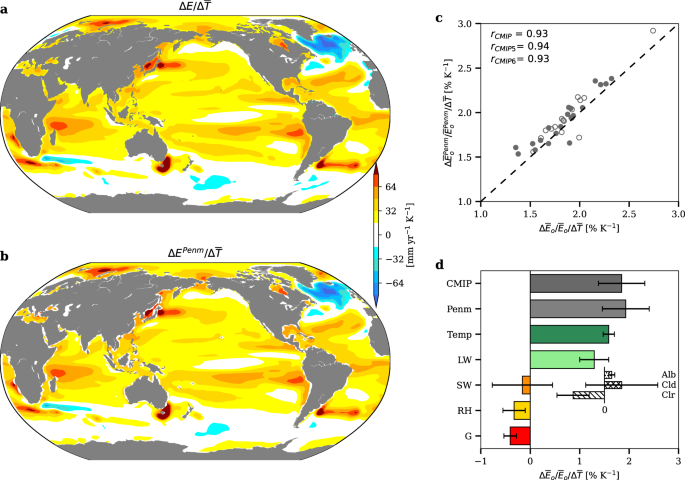2024-07-15 パシフィック・ノースウェスト国立研究所(PNNL)
<関連情報>
- https://www.pnnl.gov/publications/current-predictions-may-underestimate-precipitation-increase-climate-change
- https://www.nature.com/articles/s41467-023-42181-x
雲効果の気候学的パターンによって制約される将来の降水量増加 Future precipitation increase constrained by climatological pattern of cloud effect
Wenyu Zhou,L. Ruby Leung,Nicholas Siler & Jian Lu
Neture Communications Published:11 October 2023
DOI:https://doi.org/10.1038/s41467-023-42181-x
A Publisher Correction to this article was published on 29 April 2024
This article has been updated

Abstract
The fractional increase in global mean precipitation (△¯/¯) is a first-order measure of the hydrological cycle intensification under anthropogenic warming. However, △¯/¯ varies by a factor of more than three among model projections, hindering credible assessments of the associated climate impacts. The uncertainty in △¯/¯ stems from uncertainty in both hydrological sensitivity (global mean precipitation increase per unit warming) and climate sensitivity (global mean temperature increase per forcing). Here, by investigating hydrological and climate sensitivities in a unified surface-energy-balance perspective, we find that both sensitivities are significantly correlated with surface shortwave cloud feedback, which is further linked to the climatological pattern of cloud shortwave effect. The observed pattern of cloud effect thus constrains both sensitivities and consequently constrains △¯/¯. The 5%-95% uncertainty range of △¯/¯ from 1979-2005 to 2080-2100 under the high-emission (moderate-emission) scenario is constrained from 6.34±3.53% (4.19±2.28%) in the raw ensemble-model projection to 7.03±2.59% (4.63±1.71%). The constraint thus suggests a higher most-likely △¯/¯ and reduces the uncertainty by ~25%, providing valuable information for impact assessments.



